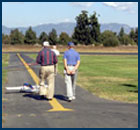

|
|

|
|
|||||||||||
 |
 |
|
 |
||||||||
|
|
|||||||||||
Community Profile |

|
|||||||||||||||||||||||||||||||
| Location The San Fernando Valley is 345 square miles bounded by the Santa Susana Mountains to the northwest, the Simi Hills to the west, the Santa Monica Mountains to the south, the Verdugo Mountains to the east, and the San Gabriel Mountains to the northeast. The Sierra Pelona Mountains (to the north) can be seen in parts of the San Fernando Valley from the gap between the Santa Susana and San Gabriel (Newhall Pass). The valley's elevation is about 250 - 1,200 ft. above sea level. The San Fernando Valley is freeway close to the US 101 (Ventura), I 405 (San Diego), I 5 (Golden State), SR 118 (Simi Valley) and SR 170 (Hollywood) Freeways. Most of the San Fernando Valley is within the City of Los Angeles, although several smaller cities are within the Valley as well; Burbank and Glendale are in the southeast corner of the Valley, Hidden Hills and Calabasas are in the southwest corner, and San Fernando, which is completely surrounded by the City of Los Angeles, is in the northeast Valley. Universal City, an enclave in the southern part of the Valley, is unincorporated land housing the Universal Studios filming lot. Mulholland Drive, which runs along the ridgeline of the Santa Monica Mountains, marks the boundary between the Valley and the communities of Hollywood and Los Angeles' westside. Los Angeles' administrative center for the Valley is in Van Nuys. The area in and around the former Van Nuys City Hall is home to a police station, municipal and superior courts and Los Angeles city and county administrative offices. Prior to development, before the arrival of the Los Angeles Owens Valley Aqueduct water, the valley was a bleak semi-desert, too dry for extensive agriculture over more than a small part of the valley. The water brought farming with some major crops including corn, cotton, persimmons, lemons, oranges, and walnuts. The advent of three new industries - motion picture, automobile, and aircraft - spurred urbanization and population growth. World War II and a subsequent post war boom accelerated this growth so that by 1960, the valley had a population of well over 1 million.
Government While each community in the San Fernando Valley has its own indicative features, most are governed by the City of Los Angeles.
For more detail information on weather conditions, visit Weather.com Demographics Visit the Economic & Demographic Information page. |
||||||||||||||||||||||||||||||||
| live | work | play | shop | advocate | calendar | chamber | community | join | contact us | get involved! | store © 2004-2007 Greater San Fernando Valley Chamber. All Rights Reserved. site map | terms of use | home • Site by ReaLife WebDesigns. |
||||||||||||||||||||||||||||||||